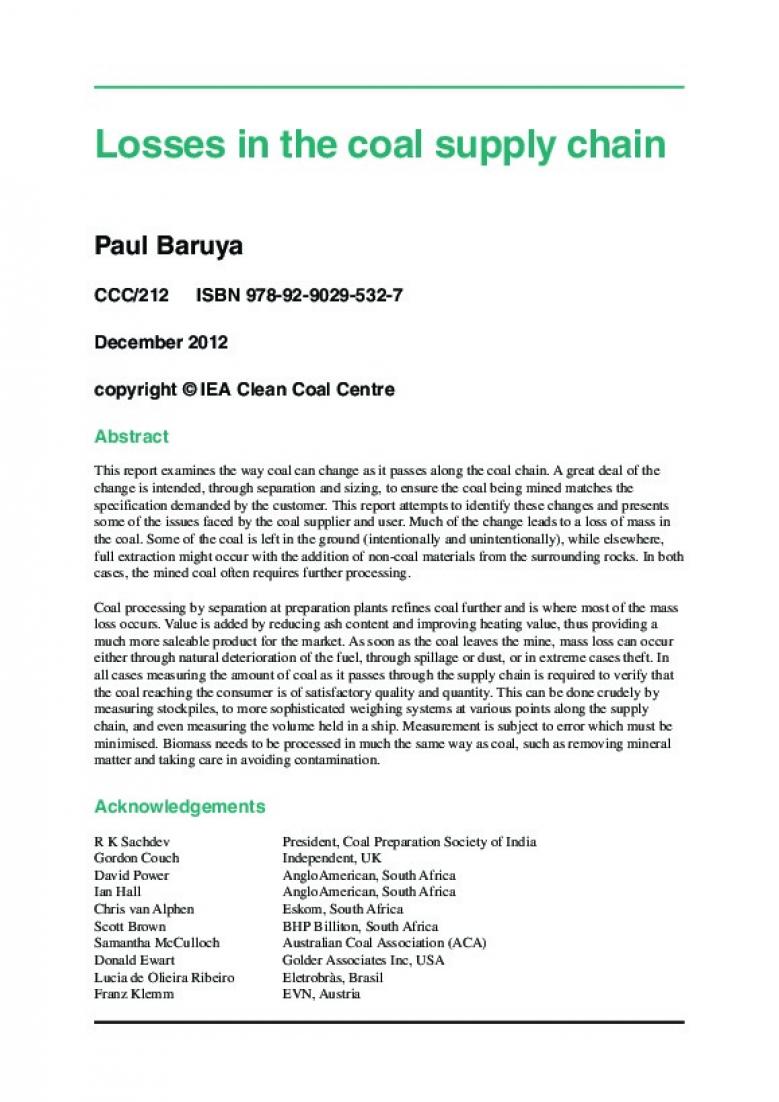CCC/212 ISBN 978-92-9029-532-7
December 2012
copyright © IEA Clean Coal Centre
Abstract
This report examines the way coal can change as it passes along the coal chain. A great deal of the
change is intended, through separation and sizing, to ensure the coal being mined matches the
specification demanded by the customer. This report attempts to identify these changes and presents
some of the issues faced by the coal supplier and user. Much of the change leads to a loss of mass in
the coal. Some of the coal is left in the ground (intentionally and unintentionally), while elsewhere,
full extraction might occur with the addition of non-coal materials from the surrounding rocks. In both
cases, the mined coal often requires further processing.
Coal processing by separation at preparation plants refines coal further and is where most of the mass
loss occurs. Value is added by reducing ash content and improving heating value, thus providing a
much more saleable product for the market. As soon as the coal leaves the mine, mass loss can occur
either through natural deterioration of the fuel, through spillage or dust, or in extreme cases theft. In
all cases measuring the amount of coal as it passes through the supply chain is required to verify that
the coal reaching the consumer is of satisfactory quality and quantity. This can be done crudely by
measuring stockpiles, to more sophisticated weighing systems at various points along the supply
chain, and even measuring the volume held in a ship. Measurement is subject to error which must be
minimised. Biomass needs to be processed in much the same way as coal, such as removing mineral
matter and taking care in avoiding contamination.
| Attachment | Size |
|---|---|
| 1000.79 KB |


